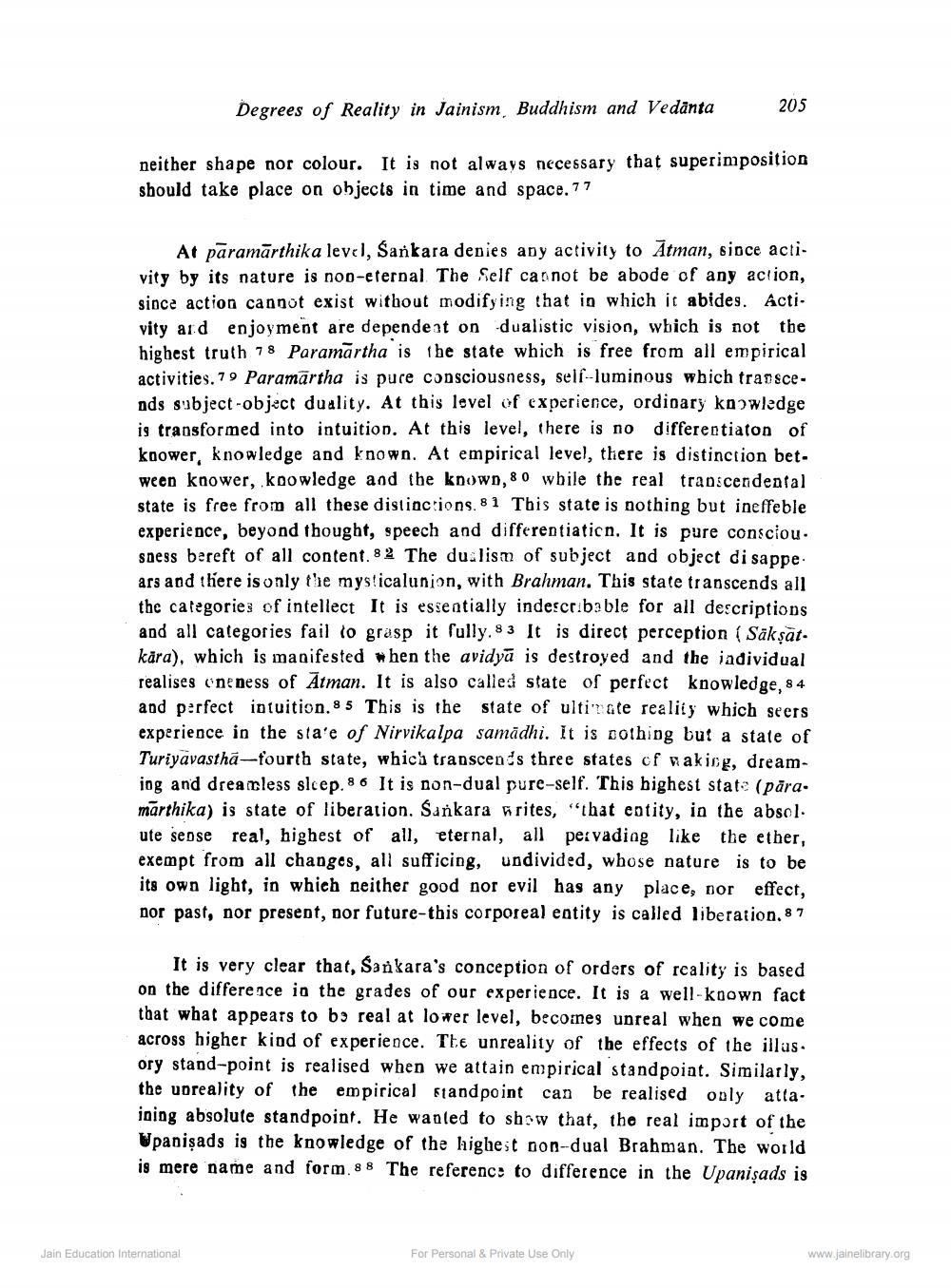________________
Degrees of Reality in Jainism, Buddhism and Vedanta
205
neither shape nor colour. It is not always necessary that superimposition should take place on objects in time and space. 77
At pāramārthika level, Sankara denies any activity to Ātman, since activity by its nature is noo-eternal The Self can not be abode of any action, since action cannot exist without modifying that in which it abides. Acti. vity and enjoymeöt are dependeat on dualistic vision, wbich is not the highest truth 78 Paramartha is the state which is free from all empirical activities. 79 Paramārtha is pure consciousness, self-luminous which transcends subject -object duality. At this level of experience, ordinary knowledge is transformed into intuition. At this level, there is no differentiaton of kaower, knowledge and known. At empirical level, there is distinction bet. ween knower, koowledge and the known, 80 while the real transcendental state is free from all these distinctions. 81 This state is nothing but ineffeble experience, beyond thought, speech and differentiation. It is pure consciou. sness bereft of all content. 8 2 The dualism of subject and object disappe. ars and there is only the mysticalunion, with Brahman. This state transcends all the categories of intellect It is essentially indescribable for all descriptions and all categories fail to grasp it fully. 83 It is direct perception (Saksāt. kära), which is manifested when the avidyā is destroyed and the individual realises oneness of Atman. It is also called state of perfect knowledge, 8 4 and perfect intuition. 8 5 This is the state of ultir ate reality which seers experience in the sta'e of Nirvikalpa samadhi. It is oothing but a state of Turiyavastha-fourth state, which transcends three states of waking, dreaming and drearless sleep. 86 It is non-dual pure-self. This bighest state (pāra. marthika) is state of liberation. Sankara writes, "that entity, in the absol. ute seose real, highest of all, eternal, all pervading like the ether, exempt from all changes, all sufficing, undivided, whose nature is to be its own light, in which neither good nor evil has any place, por effect, nor past, nor present, nor future-this corporeal entity is called liberation. 8 7
It is very clear that, Sankara's conception of orders of reality is based on the difference in the grades of our experience. It is a well-koown fact that what appears to be real at lower level, becomes unreal when we come across higher kind of experience. The unreality of the effects of the illus. ory stand-point is realised when we attain empirical standpoint. Similarly, the upreality of the empirical standpoint can be realised oply atta. ining absolute standpoint. He wanted to show that, the real import of the Upanişads is the knowledge of the highest non-dual Brahman. The world is mere name and form.88 The reference to difference in the Upanişads is
Jain Education International
For Personal & Private Use Only
www.jainelibrary.org




